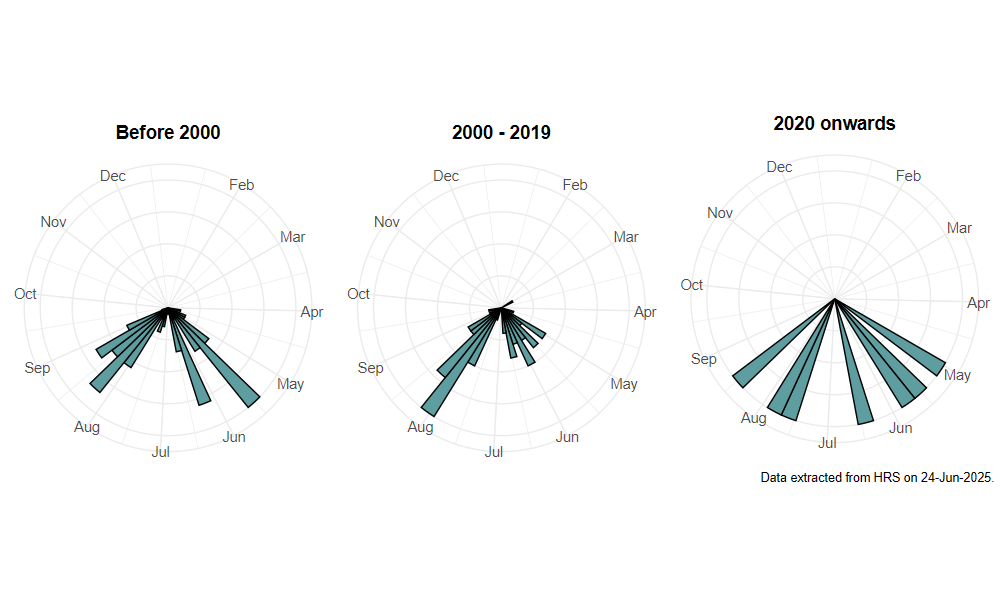Cheilosia carbonaria Egger, 1860
Identification
Identification difficulty = 3. ![]()
![]() according to Ball & Morris, 20241
according to Ball & Morris, 20241
Biology
The larva of this species is unknown. Adults are most frequently occur along woodland rides and edges, usually on well-drained and calcareous soils. They fly low along track sides, woodland edges and large hedgerows and visit a range of white umbels and yellow composites. Although Stubbs (1982)2 lists this as a 'good' primary woodland indicator, it has proved not to be confined to ancient woodlands.
Flight period
The following plots show the number of unique records per week excluding those reported to be of immature stages.

Status
Lower Risk (Nationally scarce) - Ball & Morris, 20143. Notable - Falk, 19914. Rare (RDB3) - Shirt, 19875.
Distribution
Most records are from well-wooded areas south of the Thames from Sussex to Devon. There are a few isolated records from as far north as South Lancashire.

Trends
The following plots show the Frescalo TFactor vs year and a map of the rescaled frequency (all records) for the species.
-
Ball, S., & Morris, R. (2024). Hoverflies of Britain and Ireland. WILDGuides (3rd ed.). Oxford: Princeton University Press. ↩
-
Stubbs, A. (1982). Hoverflies as primary woodland indicators with reference to Wharncliffe Wood. Sorby Record, 20, 62–67. ↩
-
Ball, S., & Morris, R. (2014). A review of the scarce and threatened flies of Great Britain. Part 6: Syrphidae. ( No. 9). Species status (pp. 1–130). Peterborough: JNCC. ↩
-
Falk, S. (1991). A review of the scarce and threatened flies of Great Britain. ( No. 39). Research and Survey in Nature Conservation (pp. 1–194). Peterborough: NCC. ↩
-
Shirt, D. (Ed.). (1987). Red Data Books: 2. Insects. Peterborough: NCC. ↩